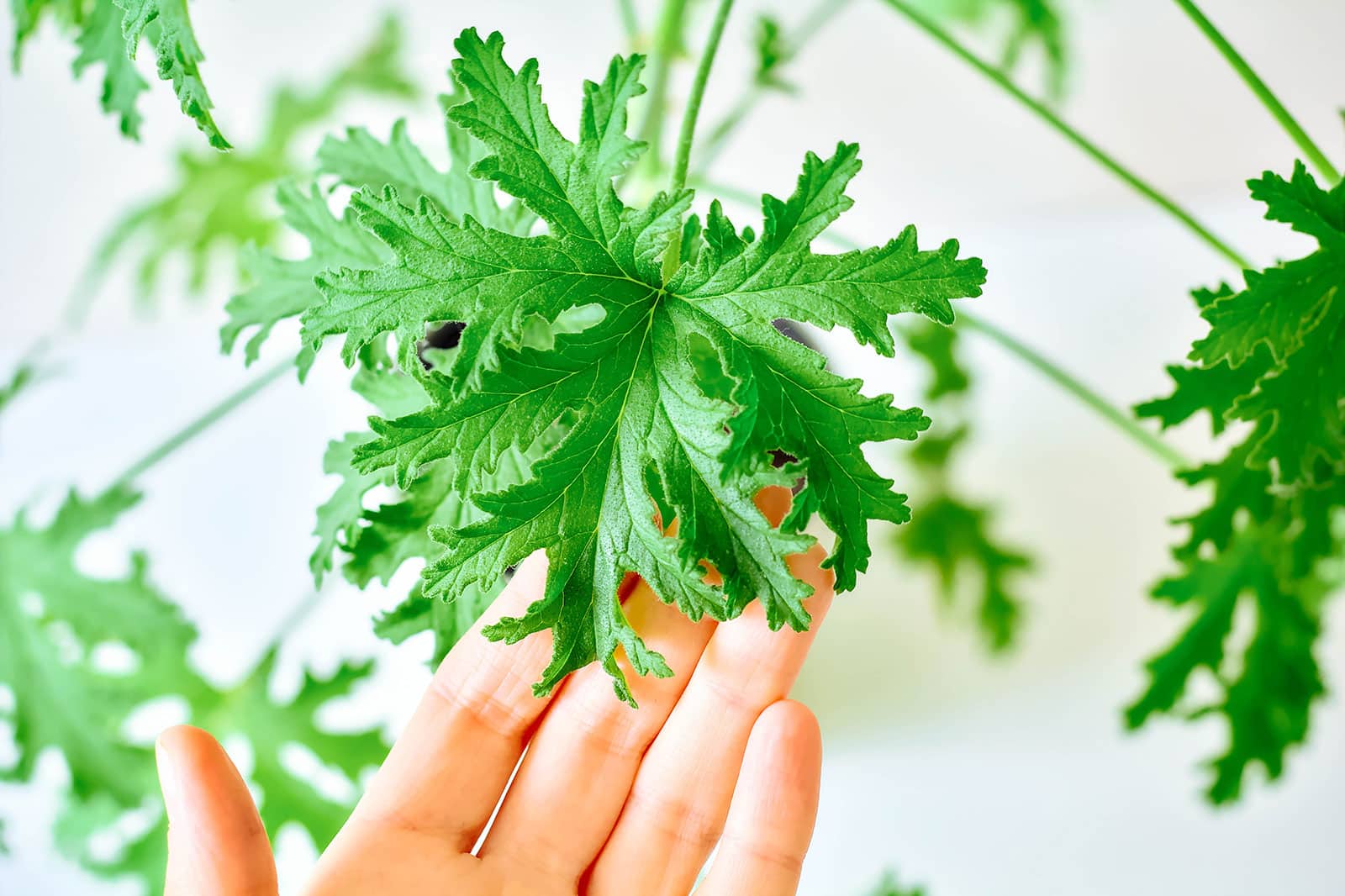Did you know that some houseplants aren’t just appreciated for their interesting foliage or extravagant blooms? Some, like today’s subject, are actually grown mainly for their scent.
Pelargonium ‘Citrosum’, also known as the citronella plant, is one of them. It releases a sweet and refreshing lemon fragrance when you crush a leaf or even just brush past the plant!
Sound good? Keep reading for everything you need to know about the citronella plant and how to care for this Pelargonium indoors.
| Common name(s) | Citronella plant, mosquito plant, citrosa geranium |
| Scientific name | Pelargonium× citrosum ‘Van Leenii’ or just Pelargonium ‘Citrosum’ |
| Family | Geraniaceae |
| Height and spread | Up to 3 feet tall and 4 feet wide |
| Light | Full sun |
| Soil type | Rich and well-draining |
| Water | Let dry halfway |
Disclosure: If you shop from my article or make a purchase through one of my links, I may receive commissions on some of the products I recommend.
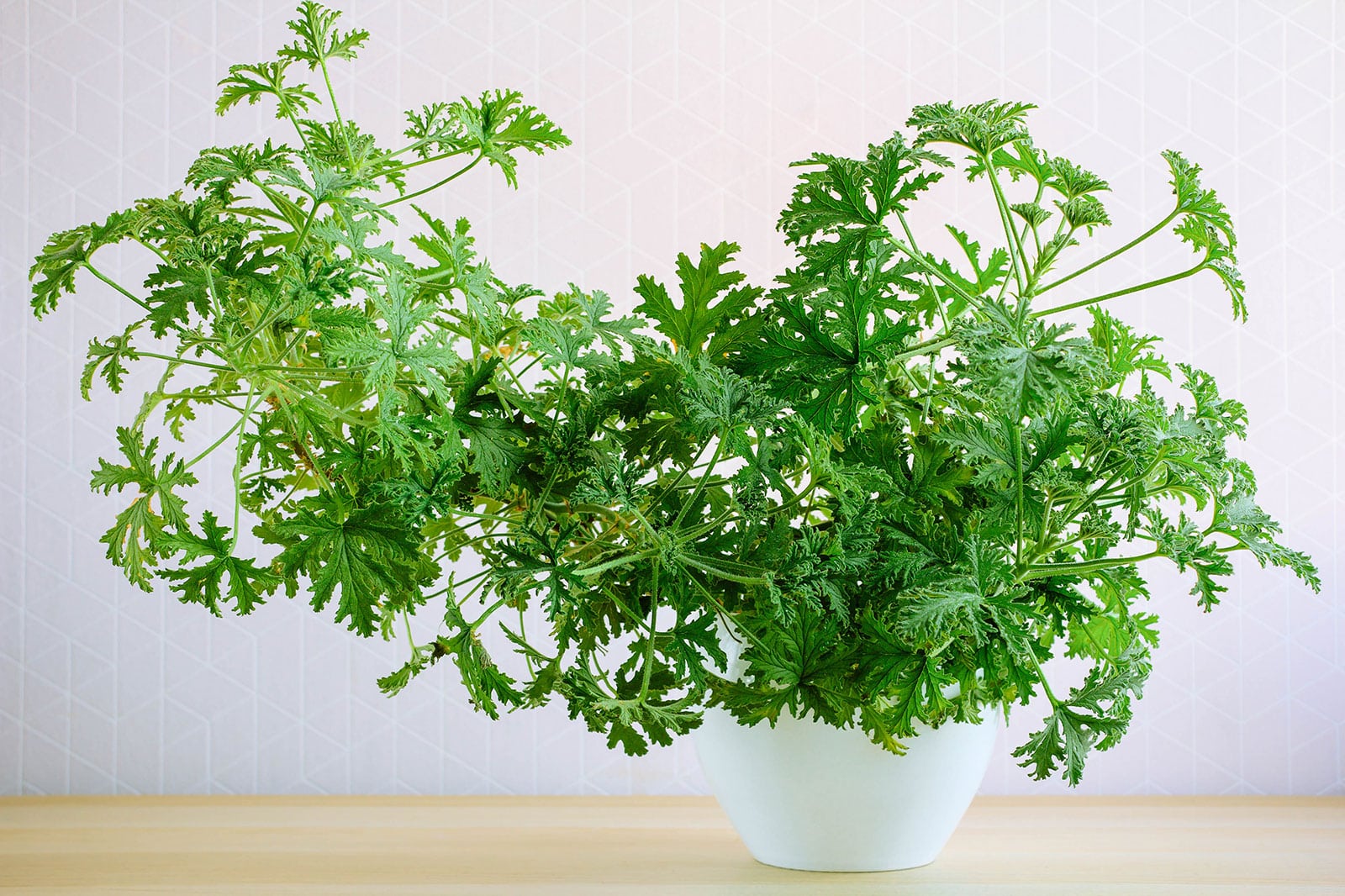
About Pelargonium ‘Citrosum’
Description
The citrosa or citronella plant is a hybrid member of the genus Pelargonium, a group of plants commonly known as scented geraniums.
They’re grown as ornamentals but a lesser-known fact is that scented geraniums have edible flowers and leaves, with different cultivars offering different flavors like citrus, rose, or mint. Can you guess what Pelargonium ‘Citrosum’ might taste like?
The bushy plant is a tender perennial with crinkled and serrated foliage. Although it produces pretty clusters of small pink and purple flowers during the summer months, its blooms are not what Pelargonium ‘Citrosum’ is known for. Instead, (indoor) gardeners love it for its scent.
As the common names suggest, citronella plant leaves emit a strong lemony odor when crushed. This fragrance is very similar to that of citronella, and it lingers for a long time. All you have to do to release a burst of lemon is to brush your hand through the plant!
Where to buy
Mosquito repellent… or not?
So, I’m sure you’ve heard of citronella plants repelling mosquitoes. This Pelargonium’s common name is “mosquito plant” for a reason, right?
In fact, that’s what it was marketed for right from its first introduction to the houseplant world. There’s a lot more to it, though! Strap in for a weird and wonderful ride, we’re diving down the rabbit hole.
You see, Pelargonium ‘Citrosum’ was bred specifically to be a new natural revolution in anti-mosquito products (or, as it was described in one 1992 Organic Gardening magazine article, a ‘skeeter skeedaddler’).
In the 1980s, a Dutch plant breeder called Dirk van Leenen introduced his new citronella plant with much ado, particularly in Florida, knowing that mosquitoes are the bane of every Floridian’s existence. This is also why this plant is still sometimes called Pelargonium × citrosum ‘Van Leenii’.
Van Leenen stated that his plant was a manmade hybrid created through tinkering with DNA by means of tissue culture, supposedly combining the African Pelargonium genus with lemongrass.
While that’s quite clearly nonsense (we’re talking about something that supposedly happened in 1975, when this technology wasn’t really available), I still can’t find much about the actual “ingredients” that went into this plant.
That’s also why Pelargonium ‘Citrosum’ doesn’t really have a natural (wild) habitat like most other houseplants, although the genus Pelargonium, in general, is mostly found in South Africa and Namibia.
Some sources now state that citrosa is just a cultivar of Pelargonium graveolens, better known among gardeners as the sweet-scented geranium. According to research, the compounds they contain are quite similar. This seems like a pretty good theory, but I haven’t found any definitive confirmation so far.
Now for the unfortunate truth. Yes, the citrosa plant smells divinely citrusy.
However… It barely contains compounds that repel mosquitoes, like true citronella oil.
In fact, studies have shown time and time again that mosquitoes don’t really give a hoot about the presence of these plants. They’ll land on you all the same. In fact, they’ll even land on the Pelargonium itself!
It’s a pity, but hey, at least the leaves still smell divine, right?
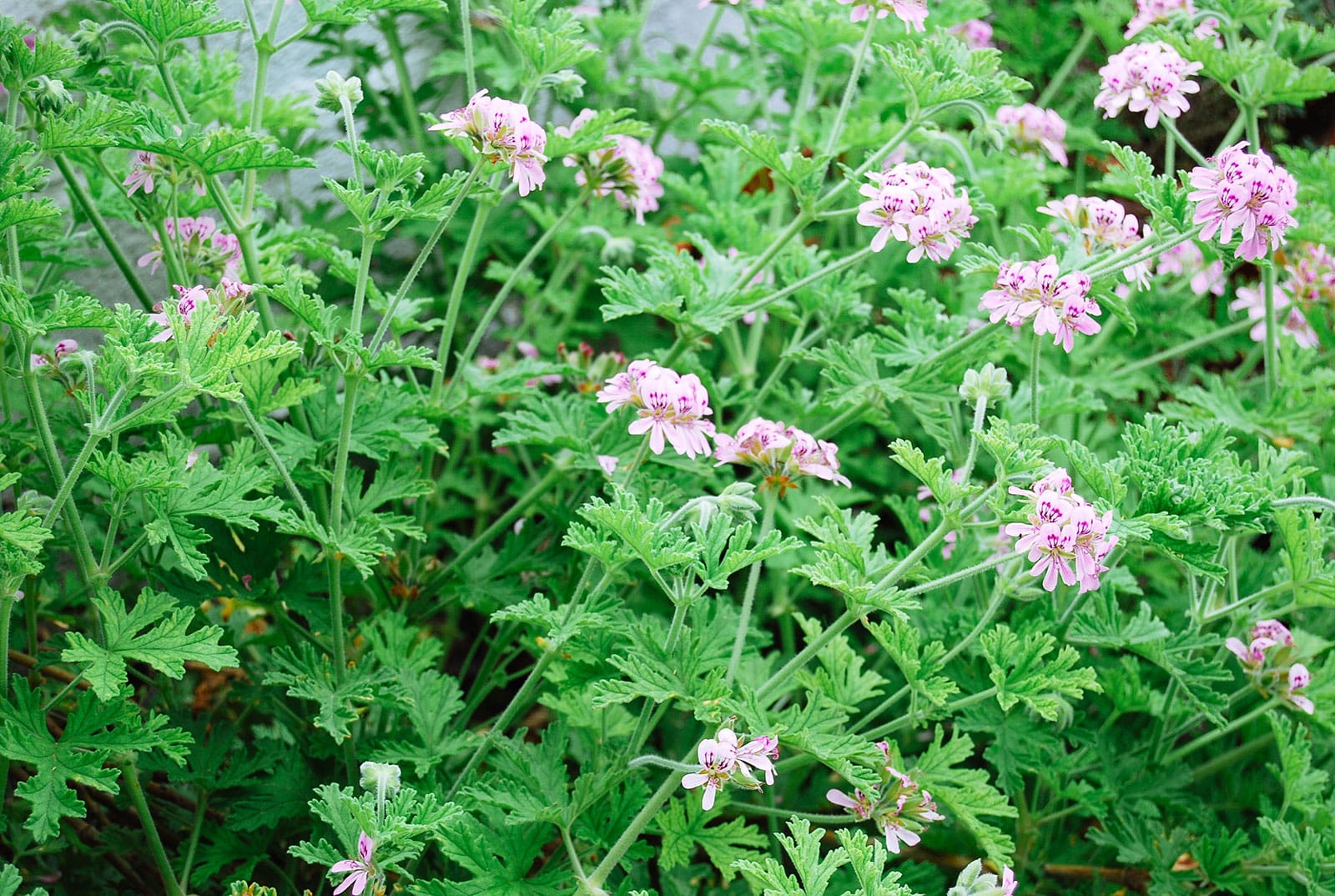
Pelargonium ‘Citrosum’ vs. Cymbopogon sp.
I think much of the confusion about the Pelargonium ‘Citrosum’ plant being able to keep your home mosquito-free has a lot to do with it sharing a common name with—and smelling very similar to—plants that actually do repel those pesky flying bloodsuckers. Lemongrass!
Let’s not forget that Dirk van Leenen apparently claimed to have genetically spliced the two species in order to create his citronella geranium.
There are two species considered to be “true” citronella: Cymbopogon nardus and C. citratus. These plants are the actual sources of the widely used citronella essential oil, which you can buy in the form of sprays or citronella candles.
They’re called mosquito plants, citronella plants, or even lemongrass—yes, that lemongrass, the tall, perennial grass that’s also used as a kitchen herb. Citronella and lemongrass are one and the same.
Related: How to grow lemongrass from stalks
Unlike oil from Pelargonium ‘Citrosum’, citronella oil from Cymbopogon grasses has been scientifically proven to work as an insecticide, larvicide, and general mosquito repellant. You can rub the oil on your skin to keep mosquitoes at bay. (I should add that simply rubbing the blade of grass on your skin won’t do anything… other than maybe giving yourself a cut.)
Citronella oil doesn’t work as well as classic DEET, but if you like to keep things natural, it will definitely help somewhat.
Did you know?
For a layer of added confusion, there’s also a tree whose scientific name is actually Citronella: Chilean citronella, or C. mucronata. For the sake of clarity, let’s just ignore that one for now.
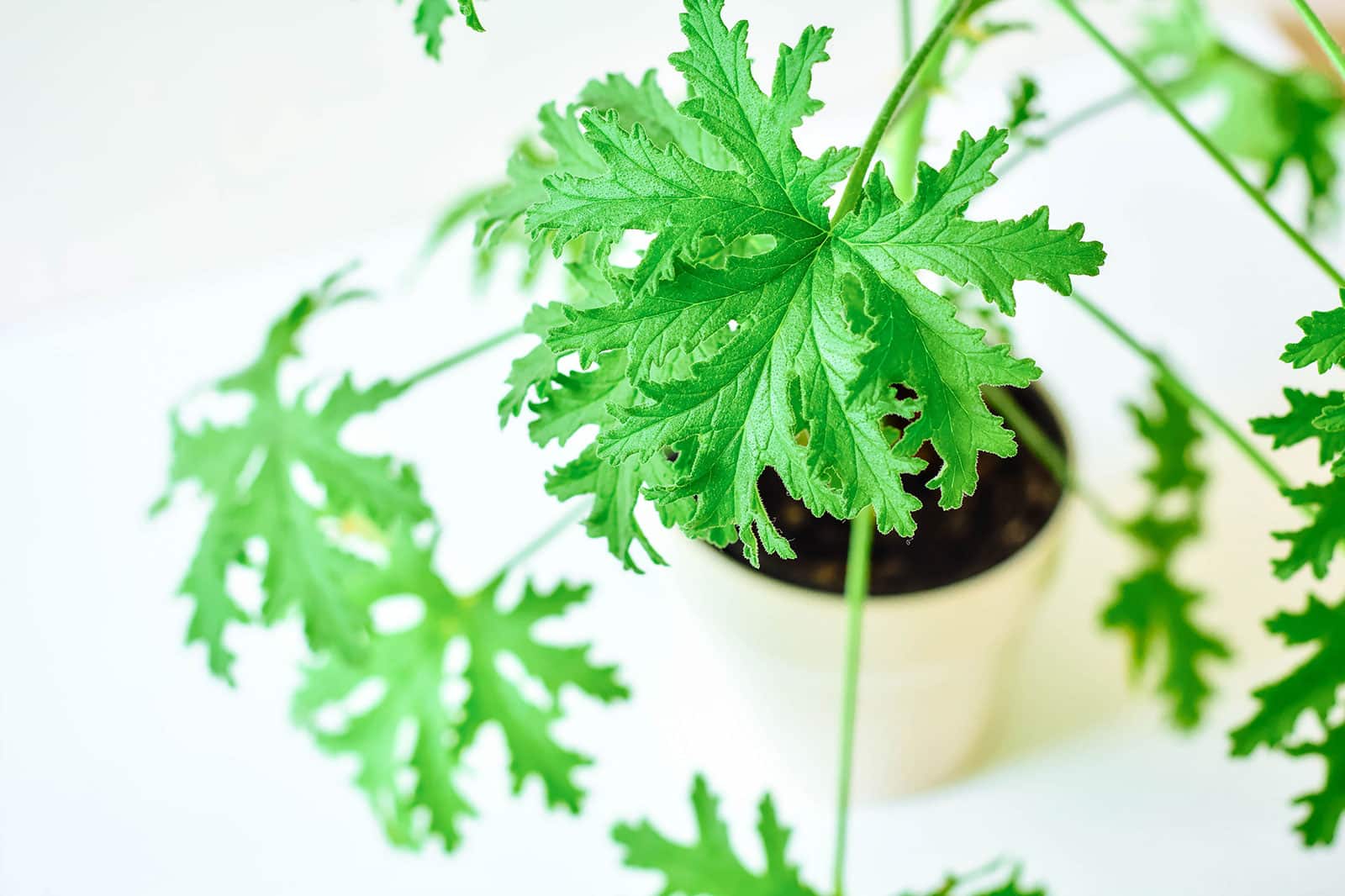
Caring for Pelargonium ‘Citrosum’
Light and temperature
Although most gardeners like to grow their citronella plant outdoors for the majority of the year, it doesn’t do well in the cold and can be overwintered indoors or simply grown as a houseplant. You just have to make sure to give it enough light!
Indoors, a Pelargonium ‘Citrosum’ will appreciate being placed in a bright windowsill that gets at least some direct sun. If you don’t have any well-lit spots available, you can also opt to supplement with artificial grow lights. If your plant begins to stretch, it needs to be moved to a brighter location.
In terms of temperature, as long as long as things don’t dip below freezing, your citronella plant should technically be fine. Still, if you’re growing yours outdoors, it’s recommended to bring it in when temperatures begin to drop below 50°F. Warmer is not a problem, as Pelargoniums actually prefer tropical temps.
Want to grow a citronella outdoors year-round? You can do so if you’re in USDA Zone 9 or up.
Water and humidity
Finding the right balance in terms of moisture is an important part of keeping your citronella plant healthy. Although they do like plenty of water, these geraniums really don’t appreciate wet feet.
In my experience, it’s best to let the soil dry about halfway before watering again. You can give a little more during the warm summer months, but wait longer in winter when your plant is likely (mostly) dormant. If you’re not sure, you can stick a finger in the soil to gauge the moisture level.
In terms of humidity, although they’re tropicals, these guys aren’t overly fussy. Unless your home gets really dry (under 40 percent) on a regular basis, your plant will be just fine.
Soil and planting
Although Pelargonium ‘Citrosum’ can thrive in a wide range of soil types, your best bet is to go for a mixture that’s both rich and well-draining. Try adding a handful of perlite and some worm castings to regular houseplant potting soil. Peat moss is also sometimes included, but you can substitute coco coir if you prefer.
Citronella plants are pretty vigorous growers, so you can go for a relatively large pot for yours without issue. The planter material and shape don’t really matter; the important thing is for it to have a drainage hole in the bottom to prevent excess water from causing root rot.
Recommended
Plant care supplies
Fertilizing
Like most houseplants, the citronella plant appreciates a little boost from time to time during the growing season. As mentioned, after all, they grow pretty quickly!
You can use a balanced liquid houseplant fertilizer around once a month or so from spring to fall. Don’t fertilize in winter, as the plant probably won’t be growing and doesn’t need the extra nutrients. Also hold off on the fertilizer if it appears to be struggling, as that will only make things worse.
Recommended
Fertilizers
Pruning
Although pruning a citronella plant is a pretty pleasant experience thanks to the scent, they generally don’t need a lot of maintenance. Still, there are a few situations in which you may want to prune yours:
- You can deadhead flowers after they’re spent to encourage more blooms.
- It’s okay to prune any leaves that have stretched (etiolated) if you think they’re unsightly. Etiolation can happen in winter, when not as much light comes in, or if you need to move your plant closer to a window.
- Removing some taller stems can encourage a citronella plant to grow bushier.
- Any dead foliage can be removed once it has turned crispy.
Dividing or repotting
Most potted citronella plants consist of a single stem, as they don’t tend to produce many offshoots. This means that division is usually not an option. If yours is outgrowing its current planter, you’ll either have to aggressively prune it back or repot it into a bigger container.
I personally prefer the latter option! There’s nothing like a huge citronella to fill a space with wonderful lemon scent every time you brush past it, so I like to let mine grow as big as possible.
You can repot a Pelargonium ‘Citrosum’ into fresh soil every other spring, optionally going up one pot size if your plant needs more space.
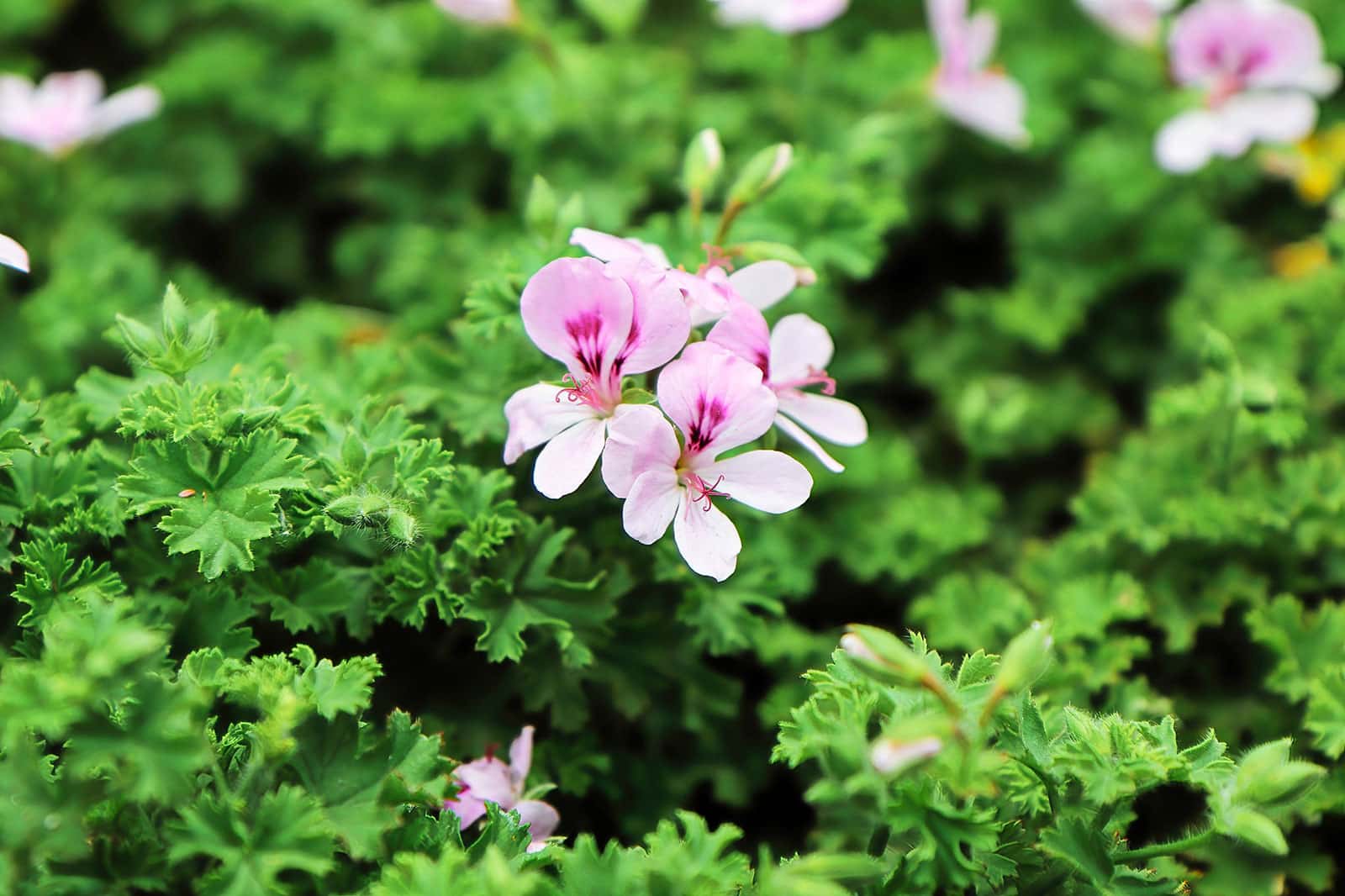
Propagating Pelargonium ‘Citrosum’
As I just mentioned, Pelargonium ‘Citrosum’ isn’t really a great candidate for division. That doesn’t mean it isn’t easy to propagate, though! If you’d like to multiply yours, you can easily do so by taking cuttings.
Here’s how you do it:
- Using clean scissors or gardening shears, cut a section of stem of at least 2 inches in length. A stem piece with leaves is ideal, but not absolutely necessary.
- Remove the bottom leaves from the cutting and place it in a glass or small vase of water, in such a way that it’s about halfway submerged.
- Alternatively, plant the cutting straight into soil. Keep the soil lightly moist by spraying it daily.
- Wait. A cutting should begin to root within a few weeks, although it can take a bit longer during the cool winter months.
- If you’re propagating in water, you can pot up the cutting as soon as its root system is around 2 inches in length.
Quick tip
If you’re propagating in soil, you can dip your citronella cutting in some rooting hormone. It really helps speed up the rooting process!
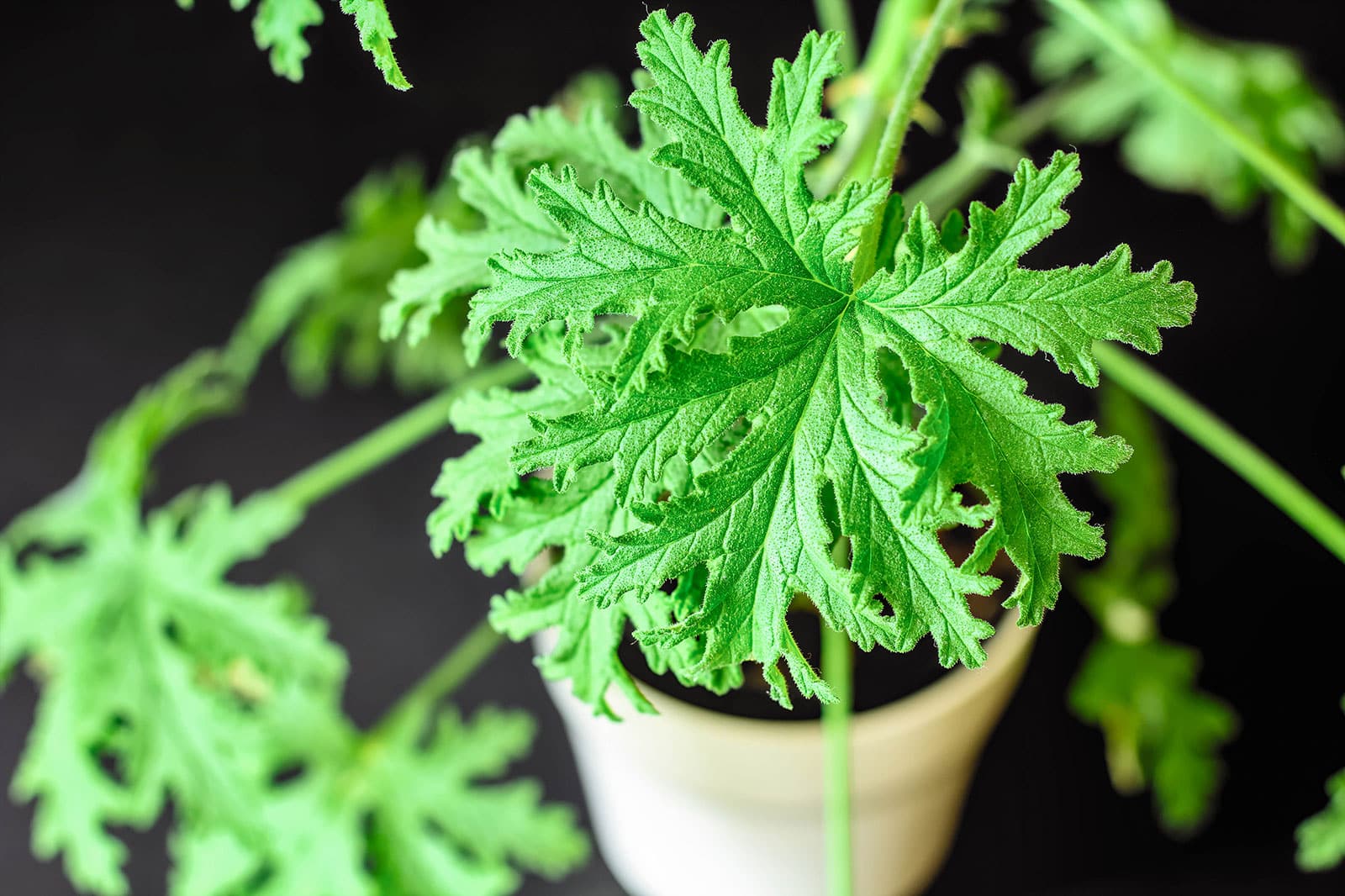
Frequently asked questions
Sources
- https://hortnews.extension.iastate.edu/1993/5-26-1993/plant.html
- https://www.richters.com/newdisplay.cgi?page=OttoRichter/1993.html
- https://news.google.com/newspapers?nid=1356&dat=19850311&id=RkdOAAAAIBAJ&sjid=pg4EAAAAIBAJ&pg=6804,6984666&hl=en
- Cilek, J. E., & Schreiber, E. T. (1994). Failure of the” mosquito plant”, Pelargonium x citrosum’van Leenii’, to repel adult Aedes albopictus and Culex quinquefasciatus in Florida. Journal of the American Mosquito Control Association, 10(4), 473-476.
- Dayananda, K. R., & Ranaweera, S. S. (1996). Mosquito-larvicidal activity of Ceylon citronella {Cymbopogon Nardus (L.) Rendle} oil fractions. Journal of the National Science Foundation of Sri Lanka, 24(4).
- Matsuda, B. M., Surgeoner, G. A., & Heal, J. D. (1996). AEDES MOSQUITOES. Journal of the American Mosquito Control Association, 12(1), 69-74.
- Meyers, M. (2006). Pelargoniums: An Herb Society of America Guide. The herb society of America, 9019.
- Solomon, B., Gebre-Mariam, T., & Asres, K. (2012). Mosquito repellent actions of the essential oils of Cymbopogon citratus, Cymbopogon nardus and Eucalyptus citriodora: evaluation and formulation studies. Journal of Essential Oil Bearing Plants, 15(5), 766-773.
- Zulfikar, A. W., & Sitepu, F. Y. (2019). The effect of lemongrass (Cymbopogon nardus) extract as insecticide against Aedes aegypti. Int J Mosq Res, 6(1), 101-103.


